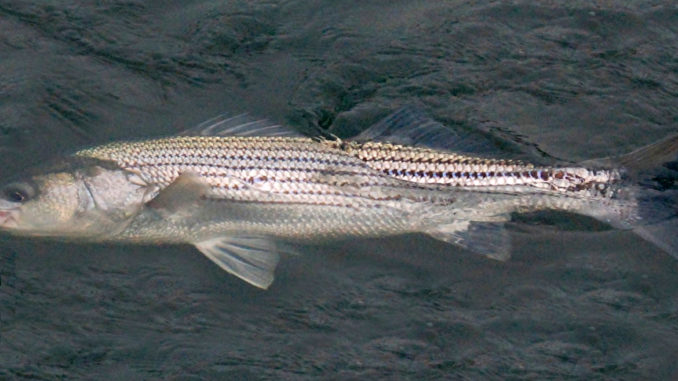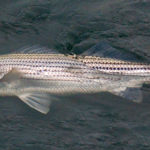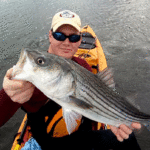
Columbia’s Congaree close to fishing heaven
The spring run of striped bass that makes its way up river from the Santee-Cooper lakes into the Congaree River offers a chance at some prime “city limits fishing” in Columbia that would make even Mike Iaconelli envious. The problem is, the pro bass fisherman and host of the “City Limits Fishing” TV show would never get his bass boat up the Congaree and back in one piece. If you’ve ever driven across one of the bridges that cross the river, the rocks and whitewater below are a power boater’s nightmare.
For Paul Davis of Lexington, the rushing sound of skinny water falling over rocks is music to his ears. It provides a barrier between him and some of the best May fishing in the state.
“Starting about mid-April when the water temperatures hit 58 to 60 degrees, striped bass start migrating out of the Santee Cooper lakes and come up the river,” said Davis. “This is some great fishing up until the end of May.”
Davis’ statement is correct on more than one level. The Congaree migration was the catalyst that allowed biologists to understand how and why saltwater striped bass could be “landlocked” and actually reproduce in a completely freshwater environment. While the migration generally peaks in May, the S.C. Department of Natural Resources recently enacted a closed season on the fishery, making it unlawful to take even attempt to take striped bass from these waters between June 1 and Sept. 30.
Access points along the river are abundant, with public ramps at Barney Jordan and Bates Bridge on the Richland County side and Thomas H. Newman on the Lexington County side. For paddlers like Davis, multiple throw–in access areas are provided on both sides of the Gervais Street Bridge, along the riverwalk on the West Columbia side, across the river at the Senate Street Landing, and near the Riverbanks Zoo. Public parking in abundant as part of the planned Three Rivers Greenway.
“It’s about a mile-and-a-half from the Blossom Street Bridge to the Saluda River,” Davis said. “It’s pretty rocky, and there’s current, but it’s not so bad that I can’t paddle my fully loaded (kayak) all the way up. It’s a place you can’t reach by foot because it’s too deep, and you can’t get there in a motorboat because of all the rocks.”
Davis said that what you get for a little bit of paddling is a whole bunch of striped bass and a fair number of smallmouth bass all to yourself, within the city limits. The water depths vary from eight to nine feet depending on the water level, which is dictated by local rainfall and releases from upstream, at Lake Murray on the Saluda side and Monticello further up the Broad. At the point where the Saluda and the Broad rivers merge to form the Congaree, Davis starts looking for fish in the clear water.
“More then 70 percent of the time, I’m sight-casting,” he said. “If I’m not casting to specific fish; I’m seeing movement and casting to that. Even if it has rained a lot and the water is murky, you’ll still see the swirls.”
Davis’ bait of choice — or at least it used to be until a few months ago — is a Smithwick Rogue, a hard-plastic jerkbait whose manufacturer is one of the PRADCO group of lures. Davis said there’s nothing wrong with the bait, but it has lost it’s appeal for him ever since he went to work for Columbia-based Pure Fishing.
“I’m still experimenting with several of Pure Fishing’s lures to see which one works best,” he said. “It won’t take me long to pick a favorite. When those fish stack up against the low-water dam in the river, they’ll eat just about anything.”







Be the first to comment